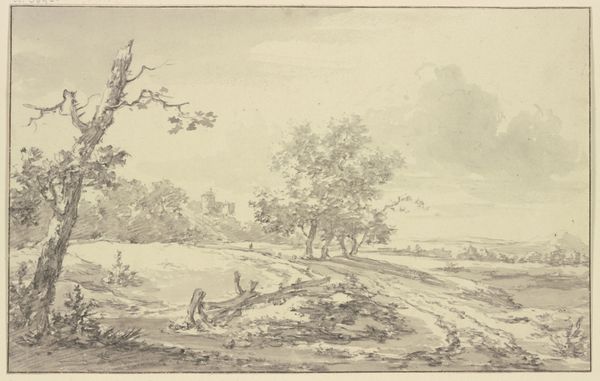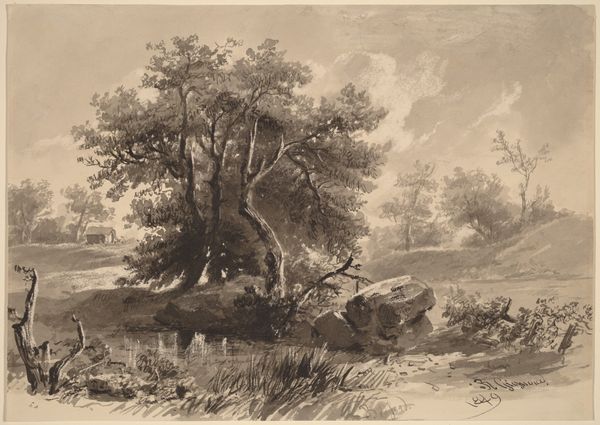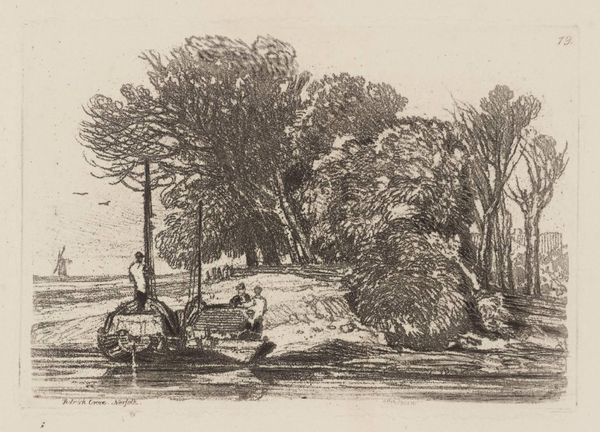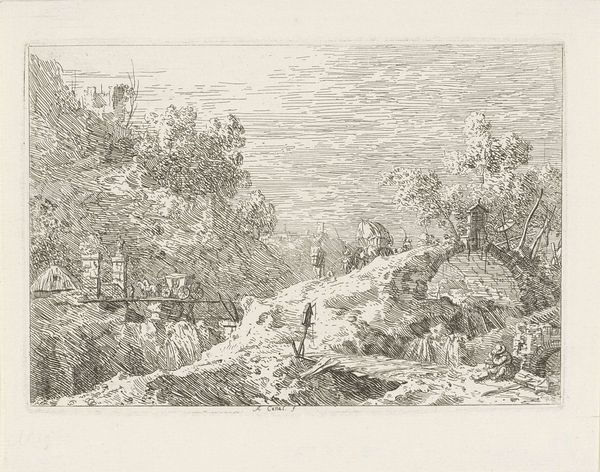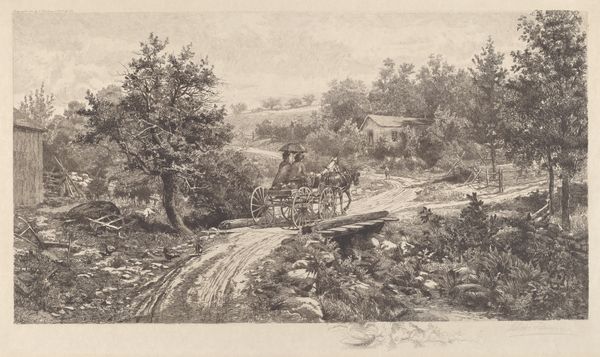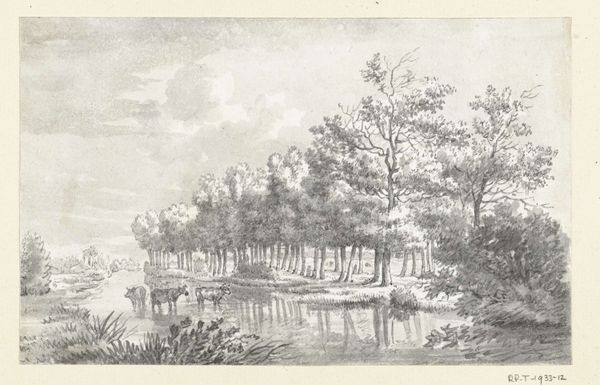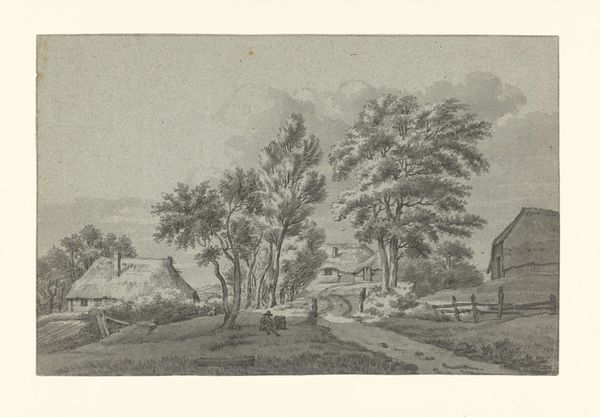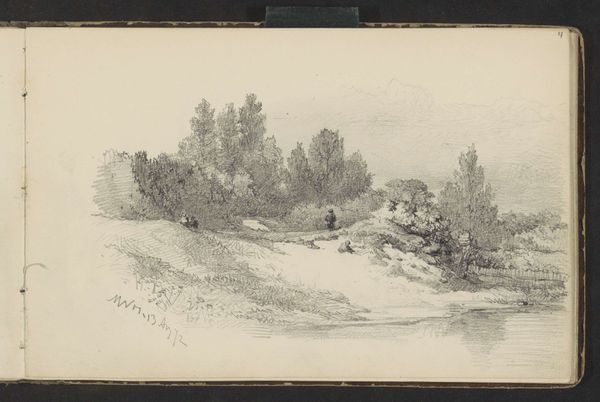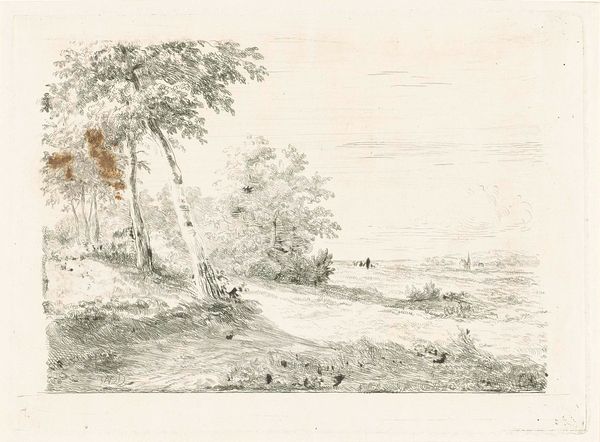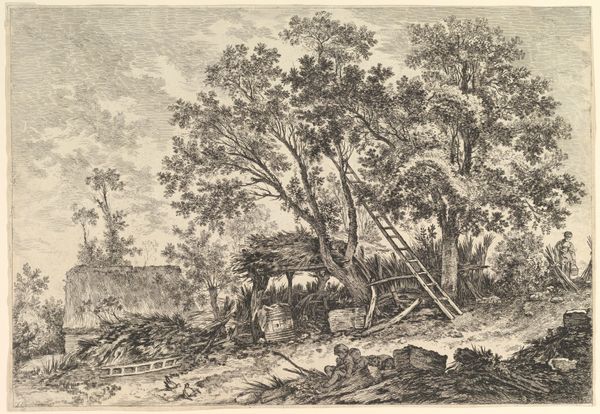
drawing, pencil
#
pencil drawn
#
drawing
#
pencil sketch
#
landscape
#
charcoal drawing
#
figuration
#
pencil drawing
#
romanticism
#
pencil
#
line
Dimensions: height 258 mm, width 371 mm
Copyright: Rijks Museum: Open Domain
Editor: So, here we have Joannes Bemme's "Landschap met wandelaar," or "Landscape with a Wanderer," made sometime between 1809 and 1841. It's a pencil drawing, very delicate. I'm struck by the scene's tranquility, even though it's quite detailed. What stands out to you when you look at this piece? Curator: Immediately, I consider the socio-economic implications of creating such a work in the early 19th century. Pencil, though seemingly simple, was becoming more readily available, transforming artistic production. Was this drawing intended for a wealthy patron, or was it a personal study, indicative of a growing leisure class with access to new materials and time to dedicate to observing and representing the natural world? Editor: That's interesting! I was just thinking about how peaceful it seems. Did the rise of readily available art materials influence landscape art more broadly at the time? Curator: Undoubtedly. Think about the shift: earlier, creating art demanded laborious processes – grinding pigments, stretching canvases. Cheaper materials meant more individuals could engage in artistic expression. Landscape art became less about depicting grand, sublime scenes exclusively commissioned by the elite, and more about the personal connection between individuals and their environment. Consider how the 'wanderer' depicted embodies this new relationship, made possible through industrial production and material access. What labor, visible and invisible, is embedded in the drawing itself? Editor: I see what you mean. I hadn't thought about the material production side of it, the pencils and paper themselves and their impact on who could create art. This piece feels less like a formal commission and more like a personal reflection because of the medium. Curator: Exactly. The 'lowliness' of the pencil drawing facilitated intimacy, immediacy, and a challenge to established artistic hierarchies. Understanding this helps us unravel the larger narratives surrounding art production, consumption, and societal transformation in the Romantic era. Editor: I will definitely keep that in mind. Thanks for shedding light on the material aspects of the work. Curator: My pleasure. Seeing the materials as active agents in shaping the artistic landscape makes these historical works so much more resonant, doesn't it?
Comments
No comments
Be the first to comment and join the conversation on the ultimate creative platform.

